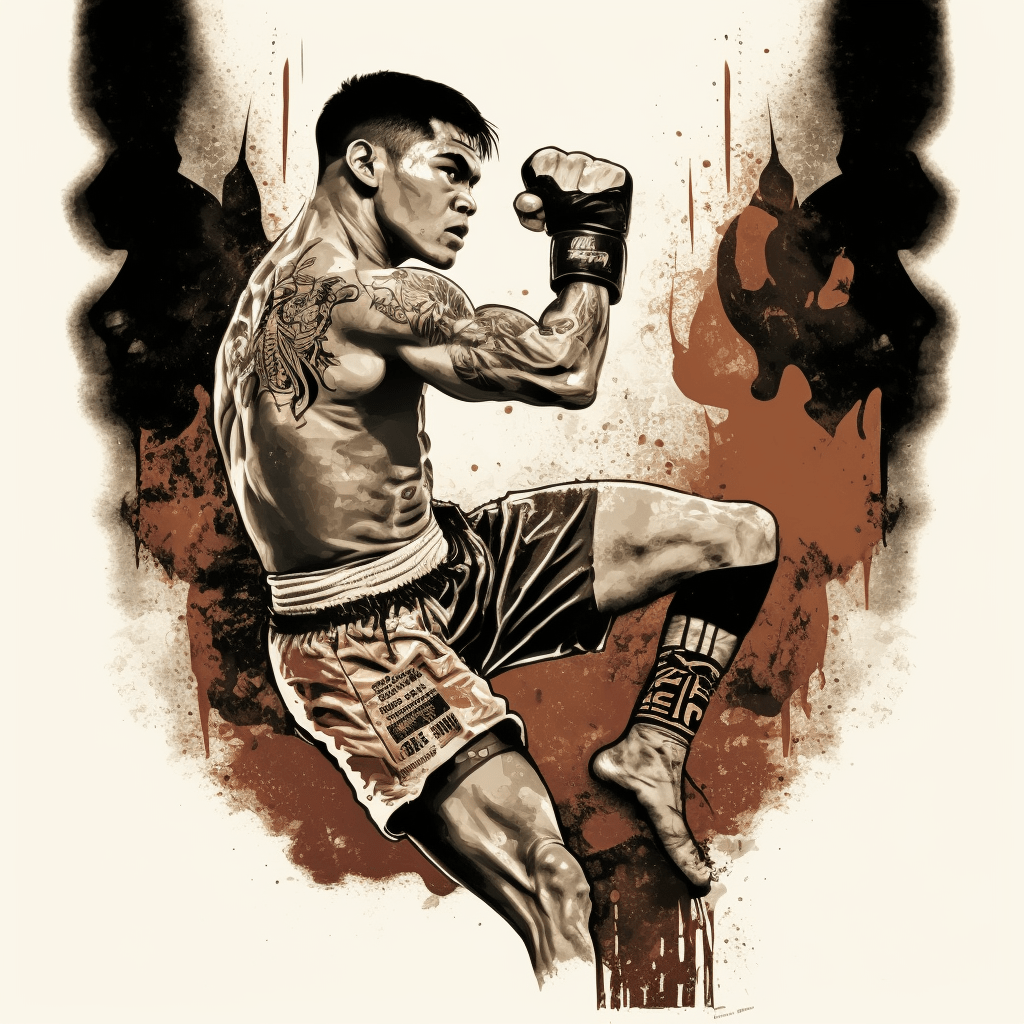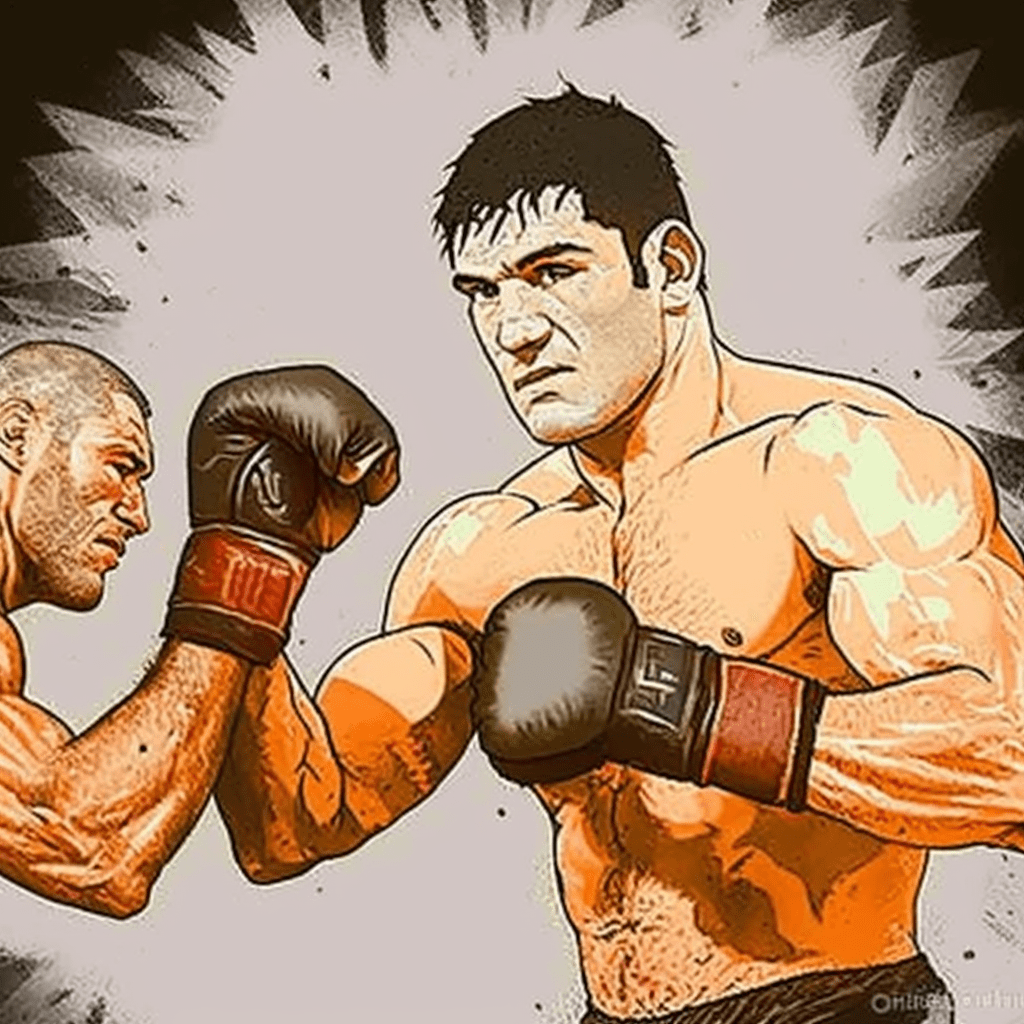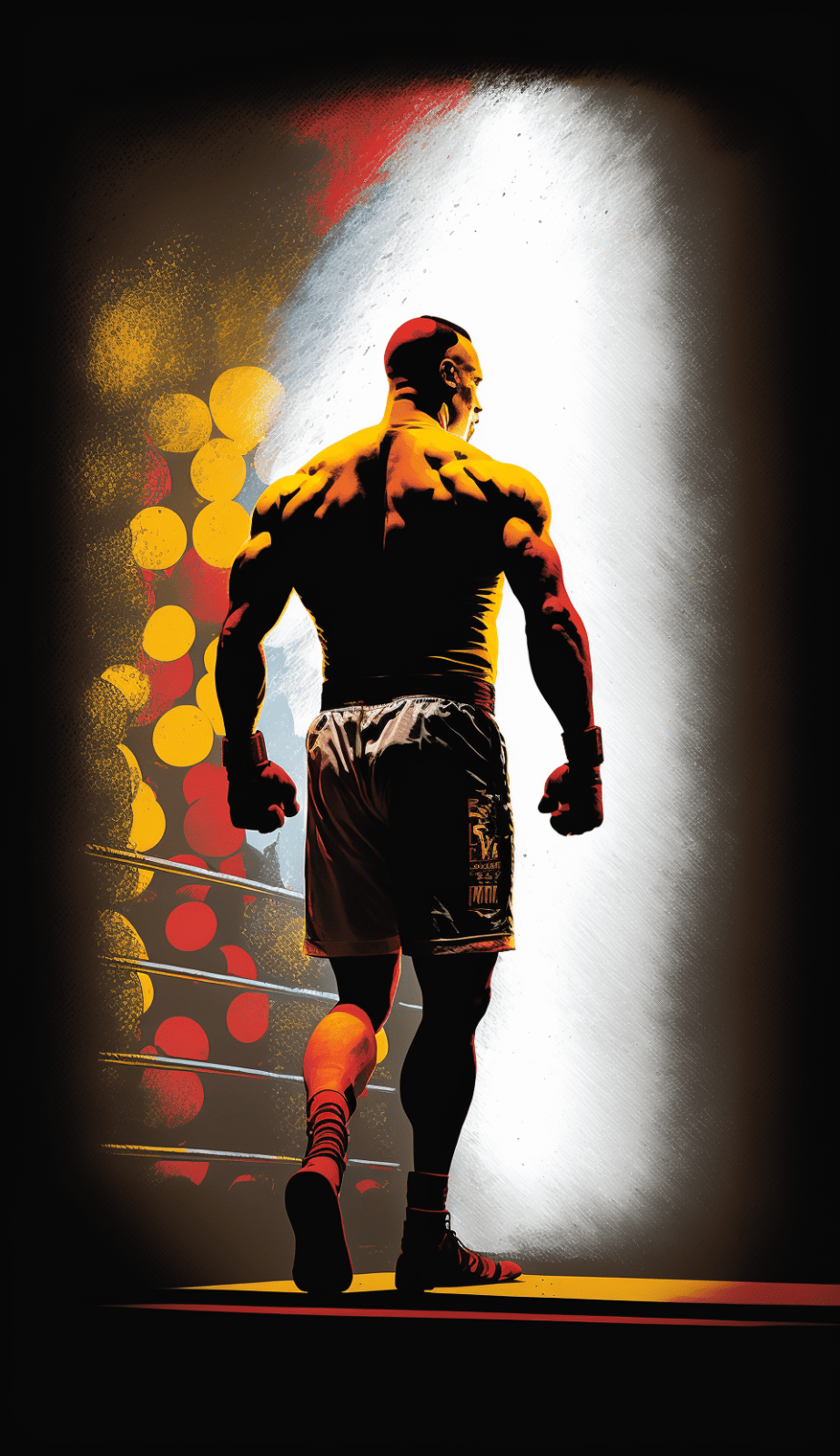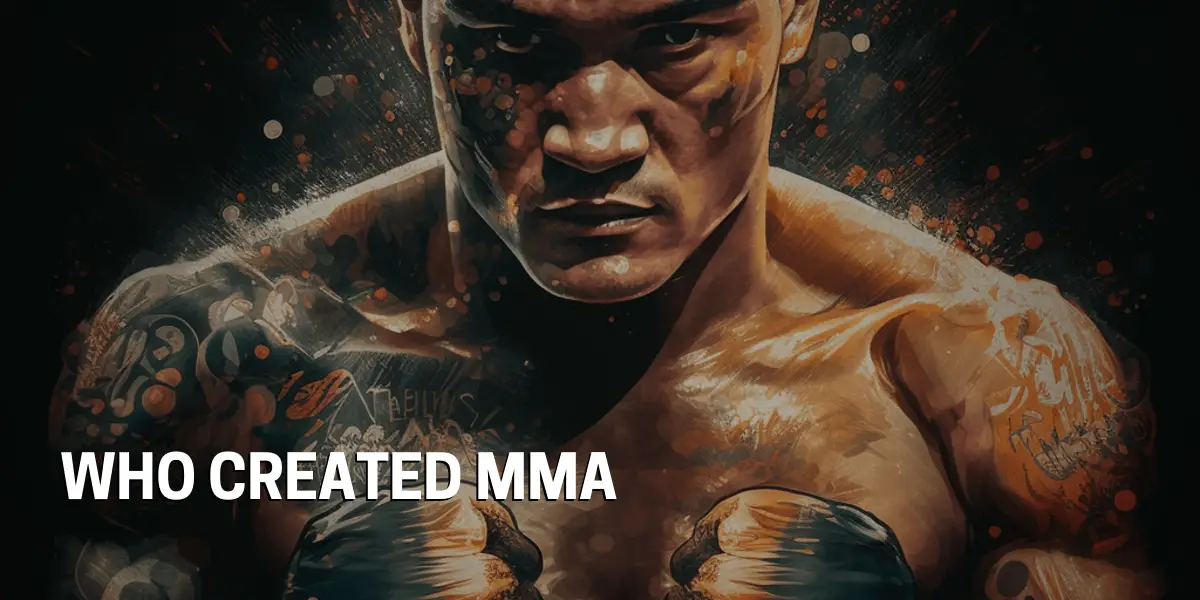Who Created Mixed Martial Arts?
Mixed Martial Arts (MMA) has been a popular combat sport for some time now, but few people know where it originated from. It is widely believed that the roots of MMA can be traced back to Pankration, an ancient Greek combat sport which combined boxing and wrestling – believed to be one of the oldest combat sports in the world.
In the early 1900s, Japanese martial arts such as judo and karate began to be blended with Pankration to create the first forms of MMA. This combination of martial arts created a unique and dynamic form of combat, gradually growing in popularity.
In 1993, MMA was credited to Rorion Gracie and Art Davie with the creation of the Ultimate Fighting Championship (UFC). This ushered in a new era of combat sports and helped to popularize MMA around the world.
The UFC continues to lead the way in MMA developments, hosting regular events featuring some of the best fighters in the world. It is thanks to their efforts that MMA is one of the fastest growing combat sports in the world.

Early Development
The roots of Mixed Martial Arts (MMA) can be traced back to the ancient Olympics, where grappling and other combat sports were popular. With the addition of wrestling, pankration, and other martial arts in the ancient Olympics, it is believed that this is the origin of modern MMA. Judo, a Japanese martial art, was popularized by Jigoro Kano in the late 19th century and adopted by other countries, leading to a surge in popularity of MMA.
This eventually culminated in the first modern MMA competition held in Japan in 1993. Since then, the sport has grown to become one of the most popular combat sports in the world. The evolution of MMA has been remarkable, with the UFC continuing to lead the way in developments and hosting regular events featuring some of the best fighters in the world.
Evolution of the Sport
It is undeniable that Mixed Martial Arts (MMA) has come a long way since its humble origins. MMA has evolved from various combat sports and martial arts from multiple cultures and countries over thousands of years. Ancient Greek, Roman, and Chinese martial arts were all influential in the development of modern MMA, and unarmed combat traditions from other cultures have also played a role.
With the emergence of MMA in the late 20th century, elements from various combat sports and martial arts were brought together to create a more unified sport. In recent years, MMA has been embraced by numerous countries, with professional leagues and organizations promoting the sport and hosting competitions around the world.
The appeal of MMA is easy to see, with its mix of striking and grappling techniques, along with its emphasis on strategy, skill, and athleticism. But the story behind the evolution of MMA is a fascinating one, with its roots stretching back thousands of years.
Prominent Figures
When it comes to the creation of Mixed Martial Arts (MMA), several prominent figures have been credited for their contribution to the sport. Bruce Lee is widely regarded as laying the groundwork for modern MMA with his own martial art style of Jeet Kune Do.
Bob Meyrowitz was the co-founder of the Ultimate Fighting Championship (UFC), which has since become one of the leading MMA organizations in the world. Rorion Gracie is credited with introducing Brazilian Jiu-Jitsu to the United States and helping to popularize the sport.
MMA is a captivating sport that has gained global popularity thanks to the efforts of Bruce Lee, Bob Meyrowitz, and Rorion Gracie. The impact of their contributions can be seen in the success of MMA today.
John McCarthy
John McCarthy is a name that is synonymous with the history of Mixed Martial Arts (MMA). A former police officer and MMA referee, McCarthy is credited with being one of the earliest promoters of MMA, having been one of the first referees to work professionally in the sport.
He was also instrumental in developing the Unified Rules of MMA, becoming a referee for some of the most famous fights in MMA history, including the first UFC fight between Hall of Famers Royce Gracie and Ken Shamrock. His commitment to the sport has been a major driving force for its success and popularity.

Rorion Gracie
In the world of mixed martial arts (MMA), Rorion Gracie is a revered and well-respected name. A member of the illustrious Gracie family, Gracie is credited as the creator of MMA, having developed the martial art as a form of self-defense in the early 1990s. As a Brazilian Jiu-Jitsu practitioner, Gracie was passionate about showcasing the effectiveness of his family’s martial art, and so co-founded the Ultimate Fighting Championship (UFC) in 1993.
Gracie’s influence on the sport has been immense. His vision and commitment to the development of MMA has seen the sport grow exponentially. His work in developing the Unified Rules of MMA places him as one of the most important figures in MMA history.
Art Davie
This collaboration led to the establishment of the Ultimate Fighting Championship (UFC), a spectacle that Davie marketed and which would become the foundation for the sport of MMA as we know it today.
In addition to his role in the creation of MMA, Davie is also credited with introducing the Unified Rules of MMA, which govern the sport and provide a safe and fair environment for competitors.
He is also credited with the development of the weight classes and the five-minute rounds, both of which are essential components of modern MMA.
Davie’s legacy will live on for many years to come. He was a visionary who helped to revolutionize the sport of MMA and has made it what it is today.
His contributions have been invaluable and his name will be remembered by all who love and appreciate the sport.
Royce Gracie
Royce Gracie is widely recognized as one of the pioneers of modern Mixed Martial Arts (MMA). He won the first three Ultimate Fighting Championship (UFC) tournaments held in the early 1990s, greatly contributing to the popularity of the sport and demonstrating the effectiveness of Brazilian Jiu-Jitsu.
His success in these tournaments earned him a place in MMA history and today he is a professor at the Gracie Jiu-Jitsu Academy in Torrance, California. Gracie is celebrated for his accomplishments in the sport, which include the introduction of the Unified Rules of MMA and the development of weight classes and five-minute rounds.
His contributions to MMA are unrivaled and his legacy will live on for many years to come. It is no surprise, then, that he has become one of the most renowned figures in the world of MMA.
v. Dana White
Dana White is a name synonymous with the world of Mixed Martial Arts (MMA). A lifelong martial arts enthusiast, White has become one of the most influential figures in the sport today. As the current President of the Ultimate Fighting Championship (UFC), the world’s largest MMA organization, White has been credited with transforming the UFC into a multi-billion dollar business and a mainstream sport.
White’s influence has been felt beyond the business realm, as well. He is credited with popularizing the sport of MMA, bringing it to the forefront of mainstream culture. Inspiring a whole new generation of martial arts fans, White has also been responsible for introducing the Unified Rules of MMA, developing weight classes, and introducing five-minute rounds. All of which have had a major impact on combat sports.

Impact on Combat Sports
Since its emergence, MMA has seen a steady growth in popularity, with more and more people taking up the sport and learning its techniques. Professional fighters have been competing in international tournaments and competitions, which has only served to further bolster the sport’s visibility and appeal.
MMA has also had a profound impact on the way combat sports are viewed and practiced today. It has introduced the Unified Rules of MMA, developed new weight classes, and introduced five-minute rounds – all of which have had a major influence on other combat sports.
MMA has also influenced other combat sports, such as boxing and wrestling, with its mix of both traditional and modern techniques. The combination of these elements has created a unique and exciting form of martial arts, captivating and enthralling people of all ages.
Popularity
Mixed Martial Arts (MMA) has become one of the most popular sports around the world. With explosive growth in recent years, more and more people are tuning in to watch professional fights, and events are being held in countries across the globe. Why has this combat sport become so popular?
MMA has a unique blend of traditional and modern techniques, and the Unified Rules of MMA have been adopted by many combat sports. This combination of elements has created an exciting form of martial arts that has captivated people of all ages. The popularity of MMA has also been helped by the influence of Dana White, the President of the Ultimate Fighting Championship (UFC), who has transformed the sport into a multi-billion dollar business.
The growth of MMA has been remarkable, and its impact on the way combat sports are viewed and practiced today is undeniable. With more and more people taking up the sport, it’s clear that MMA has a bright future ahead. The popularity of MMA serves as a testament to its captivating and enthralling nature, and its growth shows no signs of slowing.
The rules and regulations of MMA are essential for its continued growth. Understanding the basics is the key to success.
Rules and Regulations
Mixed Martial Arts (MMA) has become a popular combat sport around the world, captivating viewers and participants with its unique blend of traditional and modern techniques. The Unified Rules of MMA were first introduced in 2000 and are the foundation of the sport. These rules provide a framework for refereeing and judging, and they also establish the minimum safety requirements for competitors. Over the years, these rules have been updated, refined, and amended.
MMA also differs from traditional martial arts in terms of its rules and regulations. While traditional martial arts often have an emphasis on respect, etiquette, and self-discipline, MMA contests tend to focus more on the competitive aspect. The rules of MMA also allow for strikes and grappling techniques to be used in a more open-ended fashion than traditional martial arts.
Safety is of paramount importance in MMA and many measures are in place to ensure that competitors remain safe. All MMA events must be sanctioned by a governing body and require the presence of a referee to enforce the rules and look out for the safety of competitors. Additionally, all fighters must compete wearing protective gear such as gloves and mouthguards. In addition, there are weight classes and medical examinations that fighters must pass in order to compete.
MMA has come a long way since its inception in the early 1990s, and its rules and regulations have helped to shape the sport into what it is today. With the right safety measures in place, MMA can continue to evolve and become more popular around the world.
Influence on Other Combat Sports
It is undeniable that Mixed Martial Arts (MMA) has had a major impact on the evolution of combat sports. From the emergence of new techniques, such as the use of low kicks and the clinch in boxing, to the introduction of submissions and striking in wrestling, MMA has changed the way we practice and view combat sports.
The Unified Rules of MMA, first introduced in 2000, have helped to shape the sport and establish minimum safety requirements. MMA is a sport that requires strict safety regulations to ensure the safety of competitors, and these regulations have enabled the sport to grow in popularity around the world.

Conclusion
Mixed Martial Arts (MMA) is a rapidly growing sport. With its popularity come questions about who is responsible for it. Ultimately, the responsibility for MMA lies with all those who are involved in the sport. Athletes, coaches, event organizers, and promoters all have a role to play in ensuring MMA is a safe and enjoyable experience for everyone involved.
Why is it so important for everyone within the MMA community to take responsibility for the sport? It is important to recognize the importance of safety and fairness, so the MMA community can ensure that the sport is safe and enjoyable for all. This means that athletes, coaches, event organizers, and promoters must all collaborate to ensure that the sport is conducted in a manner that is respectful and fair.
It is also essential for the MMA community to be educated on the sport. By learning the rules and regulations, everyone can better understand the sport and how they can participate safely. Further, communication between the different stakeholders in MMA is vital to ensure that the sport is conducted with respect and fairness.
MMA is a sport that requires a great deal of responsibility from all those involved. By working together and taking responsibility for the sport, the MMA community can ensure that the sport is safe and enjoyable for all.
FAQs
What is the history of MMA?
We often hear of Mixed Martial Arts (MMA) as a fast-growing sport, but few are familiar with its history. MMA’s roots stretch back over two thousand years to the ancient Greek sport of pankration. This early form of martial arts combined boxing, wrestling, and street fighting.
In the early 1990s, the sport took a big leap forward when Brazilian Jiu-Jitsu, Judo, Muay Thai, and Wrestling were combined to create the modern form of MMA. This combination of martial arts styles caught on in the United States and Europe, and in 1993 the Ultimate Fighting Championship (UFC) was founded, becoming the first major promotion for the sport of MMA.
Who played a significant role in the development of MMA?
Mixed Martial Arts (MMA) is a fast-growing sport that has been gaining popularity over the past few decades. But who were the key players in its rise to fame? While the sport has evolved over time, there are a few individuals in particular who have played a major role in the development of MMA.
Carlos Gracie, Jr., a Brazilian martial artist, is widely credited as the founder of modern MMA. He was introduced to the martial art of Catch Wrestling by Japanese martial artist, Mitsuyo Maeda, and taught the fundamentals of Jiu-Jitsu. Gracie then combined this knowledge with elements of other martial arts such as boxing, wrestling, and street fighting.
The Gracie family is also credited with introducing the concept of “no holds barred” or “anything goes” matches to the public in the early 1990s. This opened up the door for MMA to become a more widely accepted sport and allowed for the development of organizations such as the Ultimate Fighting Championship (UFC).
The combination of all these individuals and their contributions to the sport of MMA has allowed it to evolve into a global phenomenon. MMA has transformed the combat sports landscape and continues to be one of the most popular and fastest growing sports in the world.
How has MMA impacted the combat sports landscape?
Mixed Martial Arts (MMA) has revolutionized the combat sports landscape in recent decades. How has it done so? Providing a platform for a variety of martial arts to be on full display and appreciated, MMA has made combat sports more accessible to a broader audience. This has ignited a global interest in combat sports, leading to the emergence of new organizations and events. Consequently, MMA’s popularity has skyrocketed and the sport has become one of the fastest growing in the world.
When it comes to the rules and regulations of MMA, they can vary depending on the organization. Still, the core principles of MMA events involve two participants competing against each other in sanctioned fights, with the combat taking place in a cage or similar enclosed area. All participants must also abide by a set of unified rules and regulations, designed to protect the safety of all fighters.
What are the rules and regulations of MMA?
Mixed Martial Arts (MMA) is a combat sport that has taken the world by storm in recent decades. It has become one of the fastest growing sports in the world, and has sparked a global interest in combat sports.
But before any fighter can enter the ring, they must first understand the rules and regulations that govern the sport. It is important to note that the rules and regulations of MMA can vary depending on the organization.
However, the core principles of MMA events typically involve two participants competing against each other in sanctioned fights, with the combat taking place in a cage or similar enclosed area. Additionally, all participants must adhere to the Unified Rules of Mixed Martial Arts, which set the standards for MMA events and fighters.
This includes rules governing weight classes, acceptable techniques, and attire. Referees and medical staff are present at MMA events to ensure the safety of competitors.
v. What is the future of MMA?
Mixed Martial Arts (MMA) has quickly become one of the most popular sports in the world. With its unique combination of striking, grappling and submission techniques, MMA has quickly become a global phenomenon. The popularity of MMA is increasing globally, with more and more people taking an interest in the sport. This interest has had a positive effect on the sport, with major organizations investing in MMA which will result in larger events and more opportunities for athletes to compete.
As the sport continues to grow, so does the potential for increased competition and larger events. This has led to the emergence of more high-level athletes, with many of them now competing in prestigious tournaments across the globe. Furthermore, with the increased visibility of MMA, more media coverage has been dedicated to the sport, making it easier for fans to stay up to date with the latest news and events.
The future of MMA looks bright, with more athletes, fans, and organizations taking part in the sport. As the sport continues to gain popularity, more sponsorships and opportunities for athletes to compete will arise. This will result in larger events, increased competition, and more opportunities for fans and organizations to be a part of the sport.

